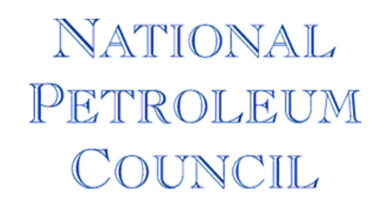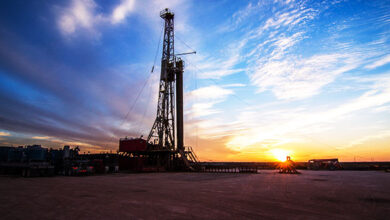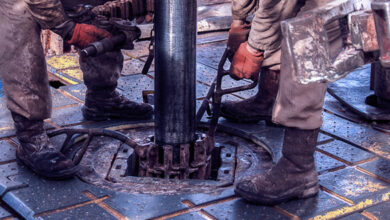IADC retrospective: charting industry history through the pages of DC
IADC celebrates its 70th anniversary in 2010. In recognition of this milestone, and in anticipation of the decades ahead, DC is publishing retrospectives from issues of decades past. We invite you to explore the the historical contrasts and similarities that may emerge and chart the industry’s evolution through these episodic vignettes. The past is written, and has brought us to 2010. But who knows what the future may hold?
9 YEARS – NDSC Rig 32 drills a record horizontal well
JANUARY 2001
National Drilling & Services Company (NDSC) set a new Petroleum Development Oman (PDO) record in November by drilling the longest horizontal well in Oman.
L-334 was the third of four “Drilling the Limit” long-reach wells being drilled by PDO in the northern Lekhwair field.
The well reached a measured depth of 18,285 ft with a lateral section of 13,272 ft. It came in 14 days ahead of the target AFE. Rig 32 recorded no LTI while drilling this well and went on to achieve 1,000 injury-free days on the fourth well.
Rig 32 is an SCR powered, National 80UE, mobile desert rig capable of moving “mast up” between in-field locations in 8-12 hours.
The rig was first commissioned with PDO for the Lekhwair turnkey project and, with its sister Rig 31, has drilled 335 wells for PDO. NDSC Chairman, Mohamed Rashid AlAraimi, cites teamwork and planning between PDO, NDSC and Sperry Sun as key reasons for this achievement.
23 YEARS – Record frac job is completed
MARCH 1987THE LARGEST single zone, single stage hydraulic fracture well stimulation ever attempted was successfully completed last November by Mobil Producing Texas & New Mexico, Inc.
The operation was conducted on the E.B. Zachry No.7 (Benavides Field, Zapata County, TX), a 9,300-ft gas well completed on a tight-rock formation.
Massive fracturing has proved to be an effective means to produce natural gas locked in formations that have little permeability and porosity.
The Benavides is one of several natural gas fields being developed in the U.S. with the aid of this technique.
As a matter of fact, Mobil discloses, past experience in the Benavides field has indeicated that it is recommendable to fracture newly drilled wells even before a production test is conducted — and such was the case of well No. 7, which had “textbook” conditions for the application of the record-setting frac job.
Upon completing the frac job, Mobil discloses, the well tested at a rate of 4.2 MMcfd and 360 b/d of load water with a flowing pressure of 3,060 psi. To pump 6.3 million lbs of sand into the well using 1.54 million gal of frac fluid, the company adds, 18 high-pressure pump trucks with 25,000 available hydraulic hp were required.
To complete the stimulation treatment, over 100 pieces of equipment were used, pumping at an average pressure of 4,500 psi. Averaging 70 bbl/min., it took approximately 10 hours and 40 minutes to complete the job.
In a successful application of high technology, the frac fluid was gelled while pumping and the sand was added by computer-controlled blending equipment which continuously added sand in a progressively increasing consentration.
37 YEARS – Oilwell unveils industry’s largest rotary
JUNE 1973The world’s largest rotary, fully 12 inches larger in turntable opening than rotaries presently available, was unveiled by Oilwell Division of United States Steel at the Offshore Technology Conference in Houston in early May.
Specially suited to offshore drilling operations, the Oilwell A49-1/2 is rated at 800 tons dead-load capacity and has a full circular 49-1/2-inch table opening which will freely pass riser couplings, ball joints, BOP equipment, conductor pipe and tools up to 48 inches in diameter.
With operators moving toward larger sub-sea equipment the need for a table opening to pass larger diameters has become an economical and technical necessity that must be answered, according to M. F. Hazel, Oilwell Division president.
Prior to the introduction of the A49-1/2, a 37-1/2-inch rotary rated at 650 tons dead-load capacity was the largest size available.
Primary advantage will be the ability to pass equipment up to 48 inches in diameter through the table.
Previously the passing of equipment larger than 36 inches in diameter required moving the rotary from its position on the rig floor.
42 YEARS – Offshore Company to Construct New Self-Propelled Elevating Drill Ship
JUNE 1968The Offshore Company, Houston, has signed a contract with a shipyard for construction of an entirely new type of drilling tool, a self-propelled elevating drill ship.
W. H. Moore, president of the company, told stockholders at their annual meeting in Houston, “This tool represents a significant advance in exploratory drilling technology. It accomplishes the impossible combination of economical mobility comparable to the self-propelled drill ship with the superior stability and drilling capability of the jack-up. The self-propulsion will afford the ability to move between locations as well as long distance moves with no assistance of tugs necessary.”
The vessel is designed to drill up to 20,000 feet in 250 feet of water and still accommodate 3500 tons variable storage while elevated.
The 276-foot by 130-foot by 21-foot ship will have propulsion power of 8000 hp and drilling power of 9000 hp. Its four triangular 3-chord legs will exceed 354 feet in length.
Air conditioned quarters will accommodate 72 drilling personnel.
61 YEARS – At 18,734’ Superior’s California Well Sets Record
APRIL 1949The deepest hole ever drilled into the ground vertically, in search of oil, was abandoned March 14th by Superior Oil Company. It drilled 18,734 feet in its Limoneira No. 1 wildcat, between Santa Paula and Ventura, Calif., breaking its own world depth record of 17,823 feet established in Caddo County, Okla., about a year ago.
Limoneira No. 1, located in the heart of the largest lemon grove in the world, reeled off its tremendous length of hole in 189 days elapsed time, making 195 round trips to accomplish the feat. In the lag few thousand feet eight hours were required to make a round trip. The tools were at work on bottom 18 per cent of the elapsed time.
The last core taken was between 18,711 and 18,721 feet. One foot of shale was recovered. The drill stopped in what is believed to have been a transition zone. It may have been Pliocene. The “bug” men seemed a little doubtful of when the drill stopped. It may have been a few hundred feet of Miocene just above bottom. At 18,445 feet the Limoneria indicated that the drill might be approaching Miocene.
In drilling this hole, which was five miles inland from the Pacific Ocean, the drillers, for the first 3000 feet ran the rotary at around 300 r.p.m., but in the last 3000 to 4000 feet it was rotating generally at 75 to 125 r.p.m. Mechanical progress was almost without incident. The pipe got stuck only three times. This was from 11,000 feet to bottom, and in each instance it was soon loosened by circulating fuel oil and jarring.
At 1,979 feet the drill went into a fresh water zone which continued without a break for 1,700 feet. Then, the drill dropped into brackish water sand, and from that into salt water. In abandoning the well, Superior put in a bridge between the brackish water and the fresh water, and welded a steel plate on top of the 13%’ surface casing. This was done so that Charles C. Teague of Santa Paula, who owns the 1850-acre lemon ranch, could convert the hole into a water well for the property, if he chose to do so. The company had the big ranch tinder lease and monthly rental for nine years before sticking a drill into it.




